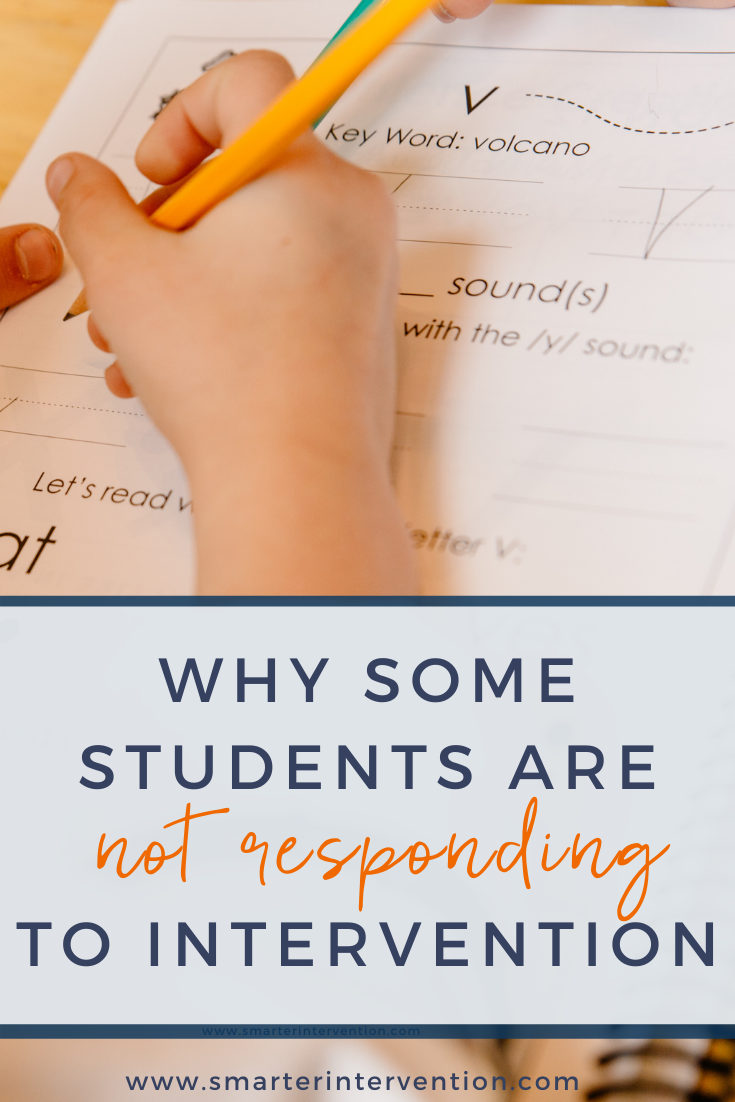What If Progress Isn’t Moving? Why Some Students Don’t Respond to Intervention (and What to Do)
We’ve all had a student who makes us pause.
You’re teaching, you’re tracking, you’re showing up week after week, but the data just doesn’t move.
It’s one of the hardest parts of being an educator.
You start wondering, “What else can I do? Am I missing something? Or maybe this student just isn’t going to make progress?”
But when scores aren’t moving, it’s actually an invitation to look at the data and the student in a new way.
We’re going to talk about Brianna…
Brianna was a bright fourth grader who’d been receiving reading intervention since kindergarten. She worked hard. Her teachers cared deeply. But despite years of support, her scores hadn’t moved much.
When we looked at her goals, they focused on decoding multisyllable words, recognizing sight words, and spelling with suffixes.
All good targets, but when we zoomed out, her data shows broader gaps: phonological awareness, phonics, vocabulary, fluency, and comprehension.
We can take a quick look at Brianna’s iReady Data…
And if we’re being honest, that disconnect is something many of us have seen before. We target what’s in front of us (the decoding, the sight words) but miss what’s underneath or beyond.
That’s where Brianna’s story becomes so familiar, and so fixable.
Why Progress Sometimes Feels Stuck:
When data flatlines, it’s easy to assume the student isn’t responding. But often, it’s the plan that needs adjusting.
Here are a few reasons why progress might appear “stuck”:
We’re missing part of the scope.
Maybe we’re focusing heavily on phonics, when the bigger need is vocabulary or comprehension.The goals aren’t clear or measurable.
“Read 20 multisyllable words” sounds specific, but it doesn’t clarify which patterns, accuracy expectations, or conditions for success.We’re not measuring the right things.
Sometimes growth is happening, just not in the areas we’re tracking. Confidence, stamina, engagement, and independence don’t always show up on progress graphs.The student isn’t engaged.
When instruction feels disconnected from meaning, it’s hard for any learner to buy in.
The Shift
When we stop seeing “stuck data” as a reflection of our teaching or the student’s ability, and start viewing it as a reflection of the system around the student, everything changes.
Instead of asking, “Why isn’t she learning?” we can ask,
“What else might be going on here? What haven’t we seen yet?”
Those two questions are EVERYTHING.
In Brianna’s case, her strongest skill (relatively speaking) was reading literature. That’s the spark, her entry point. If we build around that strength, make the work feel relevant and meaningful, we re-engage her curiosity.
Then we can rebuild the structure of support around her, not just around the checklist of skills.
How to Get Unstuck
When data isn’t moving, try approaching it like an investigation, not a verdict.
Here are a few questions to guide your next step:
Are we addressing the right skills?
Does the plan align with all five core components of literacy?Are the goals measurable and clear?
Could another educator read them and know exactly what to measure? Do we have the specificity we need?Do we know what success looks like?
Is our target a grade-level jump or a meaningful step toward it?Are we noticing growth in other ways?
Has confidence improved? Is stamina better? Do they engage more deeply in discussion?
The Takeaway
Progress monitoring isn’t just about proving something is working. It’s about finding what to do next when it isn’t.
When we look at stalled data through a curious lens, we see opportunities to refine, realign, and reconnect.
Students like Brianna aren’t “non-responders.” They’re learners waiting for the right combination of support, engagement, and clarity.
Every data point is part of their story, and part of ours.
When progress isn’t moving, it doesn’t mean it never will. It means we get to look again, ask better questions, and keep believing that growth is possible.
Try It for Yourself
We’ve created a free set of Progress Monitoring Sheets to help you capture the full picture, across phonological awareness, phonics, vocabulary, fluency, and comprehension. It’s designed to help you notice trends, strengths, and to set appropriate goals.
And if you want to take this process deeper, join our Spotlight PD: Progress Monitoring Made Simple.
Inside, we’ll walk you through how to:
Identify skill gaps across the five core components
Write measurable goals that guide instruction
Track meaningful growth (even when it’s slower than you’d hoped)
Adjust instruction based on what the data and the student are telling you






